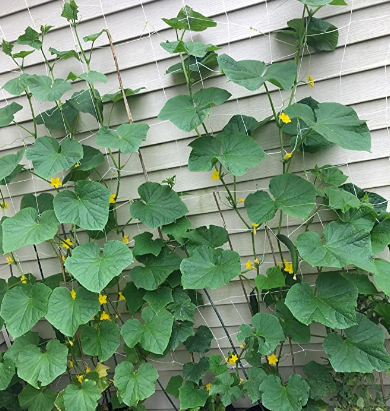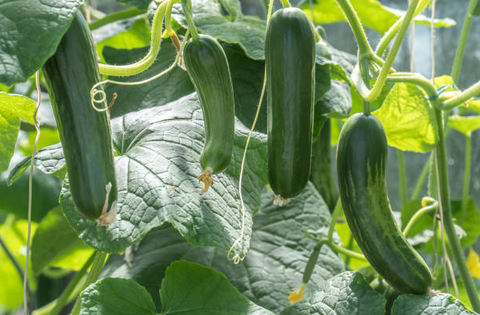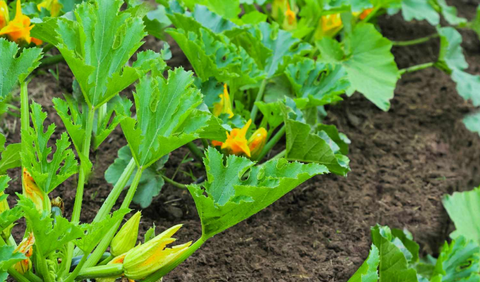As spring transitions into its full glory, May brings with it the promise of warmer days and abundant growth in the garden. To ensure your outdoor oasis remains in optimal condition throughout the season, it's essential to dedicate time and effort to garden maintenance. In this article, we'll explore a comprehensive guide to May garden maintenance, covering everything from assessing your garden's needs to planning for future enhancements.The following content also has some reference value for raised garden beds.
Assessing Your Garden's Needs
Inspecting plants for signs of damage or disease
Begin by conducting a thorough inspection of your garden's plant life. Look for any signs of damage, such as wilting leaves, discoloration, or pest infestations. Early detection is key to preventing the spread of diseases and addressing issues before they escalate.
Checking soil moisture levels
Understanding the moisture content of your soil is essential for plant health. Use a soil moisture meter or simply dig a small hole to assess moisture levels. Dry soil may indicate the need for more frequent watering, while overly wet soil could signal drainage problems.
Evaluating weed growth
Weeds compete with your plants for nutrients, water, and sunlight, so it's crucial to stay on top of weed management. Take note of any areas where weeds are proliferating and plan to address them promptly to prevent them from overtaking your garden.
Pruning and Trimming

Trimming overgrown branches and foliage
Pruning back overgrown branches and foliage not only improves the appearance of your garden but also promotes healthy growth. Use sharp, clean pruners to make clean cuts, removing dead or diseased branches and encouraging new growth.
Deadheading spent flowers
Deadheading is the process of removing faded or spent flowers from plants. This encourages continuous blooming and prevents the plant from expending energy on seed production. Be sure to deadhead regularly throughout the growing season to prolong flowering.
Shaping hedges and bushes
Maintaining the shape of hedges and bushes not only enhances the aesthetic appeal of your garden but also promotes dense, healthy growth. Use handheld or electric trimmers to sculpt your plants into desired shapes, ensuring they receive adequate airflow and sunlight.
Soil Care and Fertilization
Amending soil with compost or organic matter
Enriching your soil with compost or organic matter replenishes essential nutrients and improves soil structure. Incorporate compost into the top layer of soil or use it as a mulch to nourish plants and promote microbial activity.
Applying slow-release fertilizer
Slow-release fertilizers provide a steady supply of nutrients to your plants over an extended period, promoting consistent growth and flowering. Choose a fertilizer specifically formulated for your garden's needs and apply it according to package instructions for best results.
Mulching to retain moisture and suppress weeds
Mulching not only conserves moisture in the soil but also helps suppress weed growth and regulate soil temperature. Apply a layer of organic mulch, such as shredded bark or straw, around your plants, leaving a few inches of space around the base of each plant to prevent moisture-related issues.
Watering Strategies
Adjusting watering frequency based on weather conditions
May weather can be unpredictable, with fluctuations in temperature and rainfall. Monitor weather forecasts closely and adjust your watering schedule accordingly. During periods of hot, dry weather, increase watering frequency to ensure plants remain adequately hydrated.
Using drip irrigation or soaker hoses for efficient watering
Drip irrigation and soaker hoses deliver water directly to the base of plants, minimizing evaporation and runoff. These methods are more efficient than overhead watering and help conserve water while ensuring plants receive the moisture they need to thrive.
Watering deeply to encourage deep root growth
Encourage deep root growth by watering your plants deeply and infrequently. This encourages roots to grow deeper into the soil in search of moisture, making plants more resilient during periods of drought. Aim to water plants at the base rather than overhead to prevent foliage from staying wet, which can lead to fungal diseases.
Pest and Disease Management

Identifying common garden pests and diseases
Stay vigilant for signs of common garden pests and diseases, such as aphids, caterpillars, and powdery mildew. Early detection allows for timely intervention, preventing damage to your plants and minimizing the need for harsh pesticides.
Implementing natural pest control methods
Consider using natural pest control methods, such as introducing beneficial insects or companion planting. Ladybugs, lacewings, and praying mantises are just a few examples of beneficial insects that prey on garden pests, helping to keep populations in check.
Using organic pesticides sparingly and responsibly
If chemical intervention is necessary, opt for organic pesticides that are safer for the environment and less harmful to beneficial insects. Use these products sparingly and follow label instructions carefully to minimize negative impacts on non-target organisms.
Supporting Plant Growth
Installing supports for tall or climbing plants
Tall or climbing plants may require additional support to prevent them from toppling over or becoming damaged. Install stakes, trellises, or cages to provide support and encourage upward growth, ensuring plants reach their full potential.
Staking floppy flowers to prevent damage
Prevent damage to floppy flowers by staking them to provide support and stability. Use bamboo stakes or plant supports to prop up tall or heavy blooms, keeping them upright and preventing them from bending or breaking.
Training vines and climbers for better growth
Train vines and climbers to follow desired paths or structures, such as trellises or arbors, to promote better growth and aesthetics. Gently guide tendrils or shoots along supports, ensuring they have room to grow and thrive.
Implementing Sustainable Practices
Conserving water through rainwater harvesting
Harness the power of nature by collecting rainwater to irrigate your garden. Install rain barrels or cisterns to capture rainwater from your roof, reducing reliance on municipal water sources and conserving water for future use.
Choosing drought-resistant plants
Selecting drought-resistant plants suited to your climate reduces the need for supplemental watering and promotes water efficiency. Look for native species or drought-tolerant cultivars that can thrive in challenging conditions with minimal intervention.
Attracting beneficial insects with native plantings
Create a welcoming habitat for beneficial insects by incorporating native plants into your garden. Native species provide food and shelter for pollinators, predators, and other beneficial insects, helping to maintain a healthy balance within your garden ecosystem.
Addressing Lawn Care Needs
Mowing at the correct height
Maintain a healthy lawn by mowing at the correct height for your grass species. Cutting grass too short can stress the plants and make them more susceptible to drought and disease, while mowing too high can encourage thatch buildup and weed growth.
Overseeding bare patches
Revitalize your lawn by overseeding bare patches with grass seed suited to your climate and soil type. Rake the soil lightly to create a seedbed, scatter grass seed evenly over the area, and water gently to promote germination and establishment.
Aerating compacted soil
Combat soil compaction by aerating your lawn to improve air and water infiltration. Use a core aerator to remove small plugs of soil, allowing oxygen, water, and nutrients to penetrate deep into the root zone and promote healthy grass growth.

Maintaining Garden Structures
Inspecting and repairing fences, trellises, and garden furniture
Regular maintenance of garden structures ensures they remain functional and visually appealing. Inspect fences, trellises, and garden furniture for signs of damage or wear and tear, and repair or replace any damaged components as needed.
Cleaning and sharpening garden tools
Keep your gardening tools in top condition by cleaning and sharpening them regularly. Remove dirt and debris from tools, oil moving parts to prevent rust, and sharpen blades to ensure clean, precise cuts, making garden tasks easier and more efficient.
Storing equipment properly after use
Extend the lifespan of your gardening equipment by storing it properly after use. Clean tools thoroughly to remove dirt and moisture, and store them in a dry, well-ventilated area to prevent rust and corrosion. Organize tools and equipment for easy access and maintenance.
Planning for the Future
Assessing the success of current garden layout and plant selections
Reflect on the success of your current garden layout and plant selections to identify areas for improvement. Take note of which plants thrived and which struggled, and consider adjusting your garden design or plant choices accordingly for the next season.
Making notes for improvements or changes for the next season
Use your observations to make informed decisions about improvements or changes to implement in your garden next season. Whether it's adjusting planting locations, experimenting with new varieties, or expanding garden beds, planning ahead sets the stage for continued growth and success.
Researching new plant varieties or landscaping ideas
Stay inspired by researching new plant varieties or landscaping ideas to enhance your garden's beauty and diversity. Explore different color palettes, textures, and growth habits to create dynamic and inviting outdoor spaces that evolve with the seasons.
Conclusion
May garden maintenance is a labor of love that yields bountiful rewards in the form of lush landscapes, vibrant blooms, and healthy plants. By following these tips and implementing sustainable practices, you can ensure your garden remains in optimal shape throughout the season and beyond. With dedication, care, and a touch of creativity, your garden will flourish and delight all who behold it. Happy gardening!
Assessing Your Garden's Needs
Inspecting plants for signs of damage or disease
Begin by conducting a thorough inspection of your garden's plant life. Look for any signs of damage, such as wilting leaves, discoloration, or pest infestations. Early detection is key to preventing the spread of diseases and addressing issues before they escalate.
Checking soil moisture levels
Understanding the moisture content of your soil is essential for plant health. Use a soil moisture meter or simply dig a small hole to assess moisture levels. Dry soil may indicate the need for more frequent watering, while overly wet soil could signal drainage problems.
Evaluating weed growth
Weeds compete with your plants for nutrients, water, and sunlight, so it's crucial to stay on top of weed management. Take note of any areas where weeds are proliferating and plan to address them promptly to prevent them from overtaking your garden.
Pruning and Trimming

Trimming overgrown branches and foliage
Pruning back overgrown branches and foliage not only improves the appearance of your garden but also promotes healthy growth. Use sharp, clean pruners to make clean cuts, removing dead or diseased branches and encouraging new growth.
Deadheading spent flowers
Deadheading is the process of removing faded or spent flowers from plants. This encourages continuous blooming and prevents the plant from expending energy on seed production. Be sure to deadhead regularly throughout the growing season to prolong flowering.
Shaping hedges and bushes
Maintaining the shape of hedges and bushes not only enhances the aesthetic appeal of your garden but also promotes dense, healthy growth. Use handheld or electric trimmers to sculpt your plants into desired shapes, ensuring they receive adequate airflow and sunlight.
Soil Care and Fertilization
Amending soil with compost or organic matter
Enriching your soil with compost or organic matter replenishes essential nutrients and improves soil structure. Incorporate compost into the top layer of soil or use it as a mulch to nourish plants and promote microbial activity.
Applying slow-release fertilizer
Slow-release fertilizers provide a steady supply of nutrients to your plants over an extended period, promoting consistent growth and flowering. Choose a fertilizer specifically formulated for your garden's needs and apply it according to package instructions for best results.
Mulching to retain moisture and suppress weeds
Mulching not only conserves moisture in the soil but also helps suppress weed growth and regulate soil temperature. Apply a layer of organic mulch, such as shredded bark or straw, around your plants, leaving a few inches of space around the base of each plant to prevent moisture-related issues.
Watering Strategies
Adjusting watering frequency based on weather conditions
May weather can be unpredictable, with fluctuations in temperature and rainfall. Monitor weather forecasts closely and adjust your watering schedule accordingly. During periods of hot, dry weather, increase watering frequency to ensure plants remain adequately hydrated.
Using drip irrigation or soaker hoses for efficient watering
Drip irrigation and soaker hoses deliver water directly to the base of plants, minimizing evaporation and runoff. These methods are more efficient than overhead watering and help conserve water while ensuring plants receive the moisture they need to thrive.
Watering deeply to encourage deep root growth
Encourage deep root growth by watering your plants deeply and infrequently. This encourages roots to grow deeper into the soil in search of moisture, making plants more resilient during periods of drought. Aim to water plants at the base rather than overhead to prevent foliage from staying wet, which can lead to fungal diseases.
Pest and Disease Management

Identifying common garden pests and diseases
Stay vigilant for signs of common garden pests and diseases, such as aphids, caterpillars, and powdery mildew. Early detection allows for timely intervention, preventing damage to your plants and minimizing the need for harsh pesticides.
Implementing natural pest control methods
Consider using natural pest control methods, such as introducing beneficial insects or companion planting. Ladybugs, lacewings, and praying mantises are just a few examples of beneficial insects that prey on garden pests, helping to keep populations in check.
Using organic pesticides sparingly and responsibly
If chemical intervention is necessary, opt for organic pesticides that are safer for the environment and less harmful to beneficial insects. Use these products sparingly and follow label instructions carefully to minimize negative impacts on non-target organisms.
Supporting Plant Growth
Installing supports for tall or climbing plants
Tall or climbing plants may require additional support to prevent them from toppling over or becoming damaged. Install stakes, trellises, or cages to provide support and encourage upward growth, ensuring plants reach their full potential.
Staking floppy flowers to prevent damage
Prevent damage to floppy flowers by staking them to provide support and stability. Use bamboo stakes or plant supports to prop up tall or heavy blooms, keeping them upright and preventing them from bending or breaking.
Training vines and climbers for better growth
Train vines and climbers to follow desired paths or structures, such as trellises or arbors, to promote better growth and aesthetics. Gently guide tendrils or shoots along supports, ensuring they have room to grow and thrive.
Implementing Sustainable Practices
Conserving water through rainwater harvesting
Harness the power of nature by collecting rainwater to irrigate your garden. Install rain barrels or cisterns to capture rainwater from your roof, reducing reliance on municipal water sources and conserving water for future use.
Choosing drought-resistant plants
Selecting drought-resistant plants suited to your climate reduces the need for supplemental watering and promotes water efficiency. Look for native species or drought-tolerant cultivars that can thrive in challenging conditions with minimal intervention.
Attracting beneficial insects with native plantings
Create a welcoming habitat for beneficial insects by incorporating native plants into your garden. Native species provide food and shelter for pollinators, predators, and other beneficial insects, helping to maintain a healthy balance within your garden ecosystem.
Addressing Lawn Care Needs
Mowing at the correct height
Maintain a healthy lawn by mowing at the correct height for your grass species. Cutting grass too short can stress the plants and make them more susceptible to drought and disease, while mowing too high can encourage thatch buildup and weed growth.
Overseeding bare patches
Revitalize your lawn by overseeding bare patches with grass seed suited to your climate and soil type. Rake the soil lightly to create a seedbed, scatter grass seed evenly over the area, and water gently to promote germination and establishment.
Aerating compacted soil
Combat soil compaction by aerating your lawn to improve air and water infiltration. Use a core aerator to remove small plugs of soil, allowing oxygen, water, and nutrients to penetrate deep into the root zone and promote healthy grass growth.

Maintaining Garden Structures
Inspecting and repairing fences, trellises, and garden furniture
Regular maintenance of garden structures ensures they remain functional and visually appealing. Inspect fences, trellises, and garden furniture for signs of damage or wear and tear, and repair or replace any damaged components as needed.
Cleaning and sharpening garden tools
Keep your gardening tools in top condition by cleaning and sharpening them regularly. Remove dirt and debris from tools, oil moving parts to prevent rust, and sharpen blades to ensure clean, precise cuts, making garden tasks easier and more efficient.
Storing equipment properly after use
Extend the lifespan of your gardening equipment by storing it properly after use. Clean tools thoroughly to remove dirt and moisture, and store them in a dry, well-ventilated area to prevent rust and corrosion. Organize tools and equipment for easy access and maintenance.
Planning for the Future
Assessing the success of current garden layout and plant selections
Reflect on the success of your current garden layout and plant selections to identify areas for improvement. Take note of which plants thrived and which struggled, and consider adjusting your garden design or plant choices accordingly for the next season.
Making notes for improvements or changes for the next season
Use your observations to make informed decisions about improvements or changes to implement in your garden next season. Whether it's adjusting planting locations, experimenting with new varieties, or expanding garden beds, planning ahead sets the stage for continued growth and success.
Researching new plant varieties or landscaping ideas
Stay inspired by researching new plant varieties or landscaping ideas to enhance your garden's beauty and diversity. Explore different color palettes, textures, and growth habits to create dynamic and inviting outdoor spaces that evolve with the seasons.
Conclusion
May garden maintenance is a labor of love that yields bountiful rewards in the form of lush landscapes, vibrant blooms, and healthy plants. By following these tips and implementing sustainable practices, you can ensure your garden remains in optimal shape throughout the season and beyond. With dedication, care, and a touch of creativity, your garden will flourish and delight all who behold it. Happy gardening!









